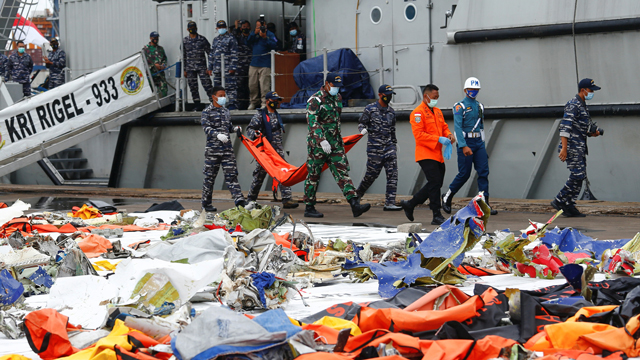“Loss of Control In-flight remains the single greatest cause of fatalities in commercial aviation…”
~ Boeing Flight Operations Technical Bulletin
A preliminary accident report regarding Sriwijaya Air Flight SJ182 — which went into a dive shortly after takeoff on Jan. 9, killing all 62 aboard — highlighted the importance of upset prevention and recovery training for pilots, according to a recent article posted on Reuters.com.
Boeing issued a Flight Operations Technical Bulletin stating that “loss of Control In-flight remains the single greatest cause of fatalities in commercial aviation,” and warning pilots to actively monitor their airplane state. In addition, the bulletin lists several possible causes of Loss of Control In-flight (LOC-I) and states that preventing LOC-I requires the active participation of pilots.

Would You Have Survived?
Many pilots might look at the mistakes made by pilots in this accident and be able to easily point out errors made, but these observations are made from a position of calm and safety while reading a computer screen. From training in the security of a simulator, it can often be easy to forget the confusion and cognitive impairment that can occur in an unexpected upset event. The human factors impacts on pilot performance are often greatly underappreciated by those who train primarily or exclusively in a simulated environment.
Counterintuitive Responses May Be Needed
While the final accident report has not yet been published, we do know that the plane entered an abrupt spiral dive initiated by asymmetric thrust, and the preliminary report indicates the flight may have been recoverable. What is key to remember here is that even for well trained pilots, the responses needed in certain upset situations can be highly counterintuitive. Upset Prevention and Recovery Training (UPRT) trains pilots to respond in exactly this type of situation.
Upset Recovery Is Key to Prevention
It is not just that UPRT teaches the counterintuitive inputs necessary to recover from an unexpected upset which could lead to LOC-I, but that the process of learning these techniques in and of itself greatly enhances prevention. UPRT illustrates to pilots changes to their aircraft’s flight path in an upset, which improves their mental modeling. This process enhances their pattern recognition of escalating undesired aircraft states that could lead to an aircraft upset, expediting their intervention at an earlier stage. This is a critical skill in appropriately responding to the deviations which occurred in this accident, as well as to numerous other precursors to LOC-I.
What We Can Say For Sure
Of course, we cannot say for sure that had the pilots of this flight had UPRT, the accident would have been avoided, but what we can say for certain is that UPRT effectively trains pilots to recover an airplane in just these types of situations. It certainly would have assisted the pilots in recognizing the impending crisis. This would have assisted in pre-empting their entry into a dive in the first place, or if not, would have provided them with effective knowledge and skills for recovery using proper techniques.
It is clear from this as well as other recent accidents, and many non-fatal incidents, that all pilots would benefit greatly from UPRT. The longer we wait to implement this training globally, the more preventable accidents will occur.
View recent webinars featuring UPRT experts from major airlines to see first-hand how UPRT benefits even the most well-trained pilots in the top airlines in the world.




Comments: